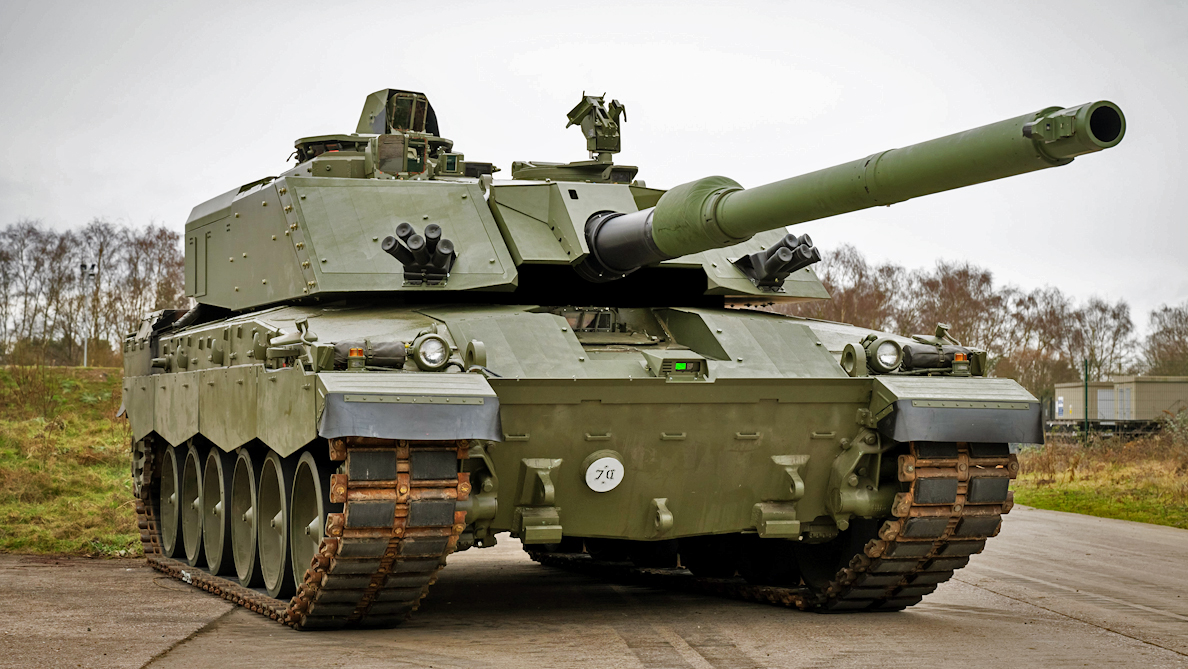The prototype for the British Army’s next main battle tank, the Challenger 3, has been revealed. Following its completion in the factory in Telford, England, the new tank is scheduled to begin trials soon, ahead of planned service entry in 2027.
While the United Kingdom currently plans to convert a relatively small number of Challenger 2s — just 148, including eight prototypes — into the new version, the situation could have been very different. Before the full-scale Russian invasion of Ukraine there was speculation that the British Army may lose its tanks altogether.
The first photos of the initial Challenger 3 prototype were released yesterday by Rheinmetall BAE Systems Land (RBSL), a joint venture between the Germany’s Rheinmetall and Britian’s BAE Systems. The photos were first made public at the IQPC International Armored Vehicles conference in London.
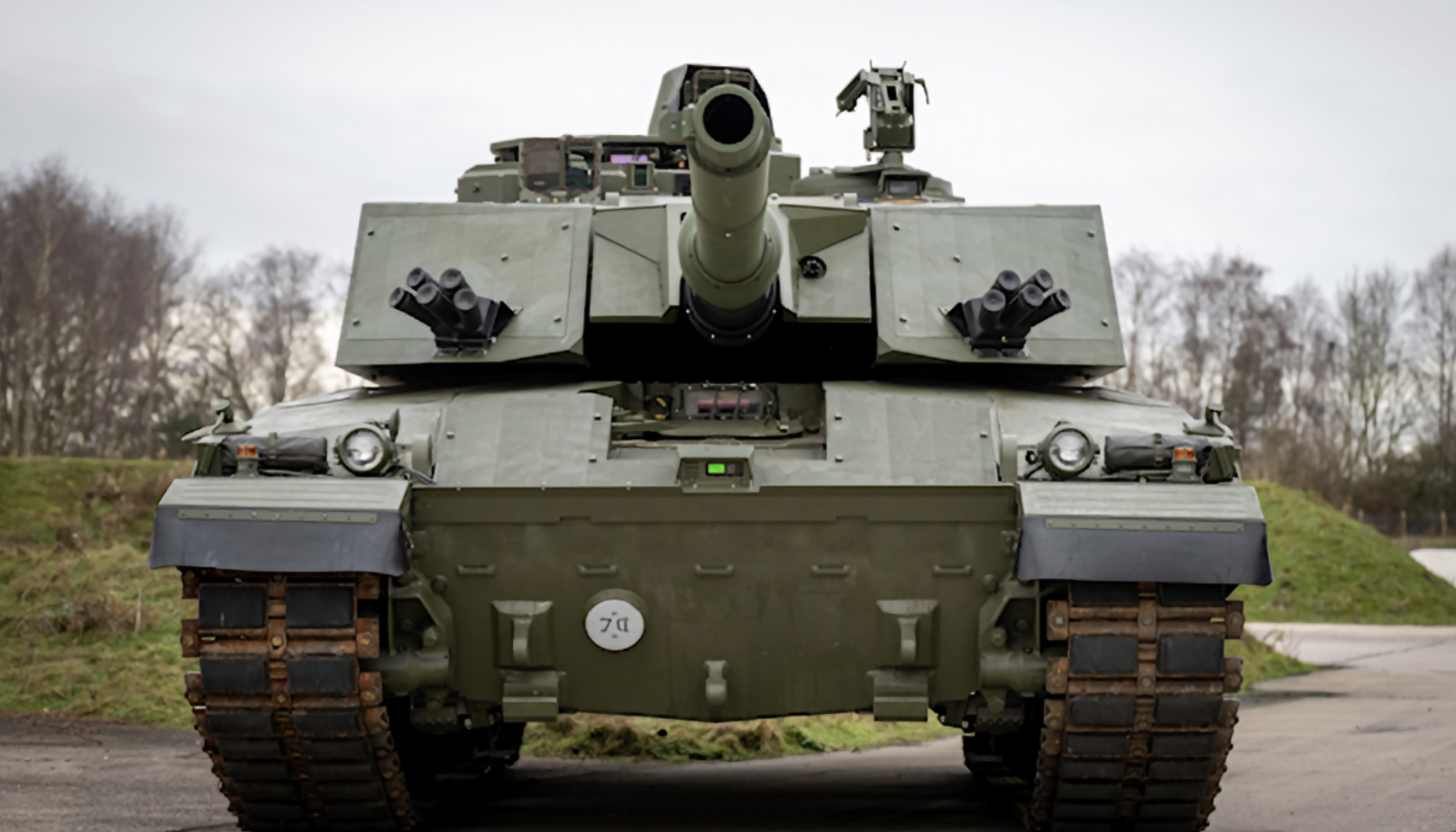
“The Challenger 3 program will deliver the best tank in NATO … and deliver a network-enabled, digital main battle tank, providing the soldier with a step-changing capability,” said Rory Breen, strategy and future business director at RBSL, Breaking Defense reported.

As expected, the Challenger 3 is dominated by its new turret armed with Rheinmetall’s 120mm L55A1 smoothbore cannon. This replaces the L30A1 rifled gun, of the same caliber, found in the current Challenger 2. This new weapon ensures a greater muzzle velocity — the projectile leaving the barrel faster and providing an improved degree of penetration and, in some cases, range.
Most of the details of the Challenger 3 had been revealed earlier in the program, with the best online reference to these features having been provided back in 2021 by tank specialist Jon Hawkes, in the following thread:
The gun fires single-piece ammunition, rather than the two-piece rounds that are used in the Challenger 2. A wide range of NATO-standard smoothbore ammunition is therefore available, including the DM63 and DM73, Rheinmetall’s armor-piercing fin-stabilized discarding sabot (APFSDS) rounds. These types of ammunition feature a long dart penetrator, which uses kinetic energy to penetrate enemy armor.
Potentially, the Challenger 3 could also fire the U.S.-made M829A4 round, another APFSDS type, but one that features depleted uranium (DU) penetrator, denser than many penetrators made of more conventional metals, for improved armor-piercing performance. Currently, the British Army uses a DU round in the Challenger 2, the L27A1 CHARM 3.
A video offering a general overview of how APFSDS tank ammunition works:

While NATO-standard ammunition will bring logistics and cost advantages, the space requirements of the single-piece ammunition mean that the total number of rounds carried is 31, compared to 49 in the Challenger 2. The ammunition is stored in an isolated bustle compartment, at the rear of the turret, to improve survivability if the tank takes a hit.
The Challenger 3 is provided with an optical/targeting package that’s the same as the one found in the British Army’s Ajax tracked infantry fighting vehicles. This comprises the Thales Orion and Day/Night Gunner And Panoramic Sight (DNGS T3). Once again, this should bring logistics and cost benefits. These sensors are part of an open-architecture concept, or what the manufacturer describes as a digitized turret, meaning the hardware and software will be able to easily accommodate new systems far faster and more economically than in the past.
To enhance its level of protection, the Challenger 3 has received a new modular armor (nMA). Using a modular system means that specific parts of the armor can be quickly removed and replaced. It also means the United Kingdom doesn’t need to buy full sets of armor for all 148 Challenger 3s, instead equipping individual tanks with nMA as and when required.
The nMA package includes appliqué armor for the sides of the hull and the belly.
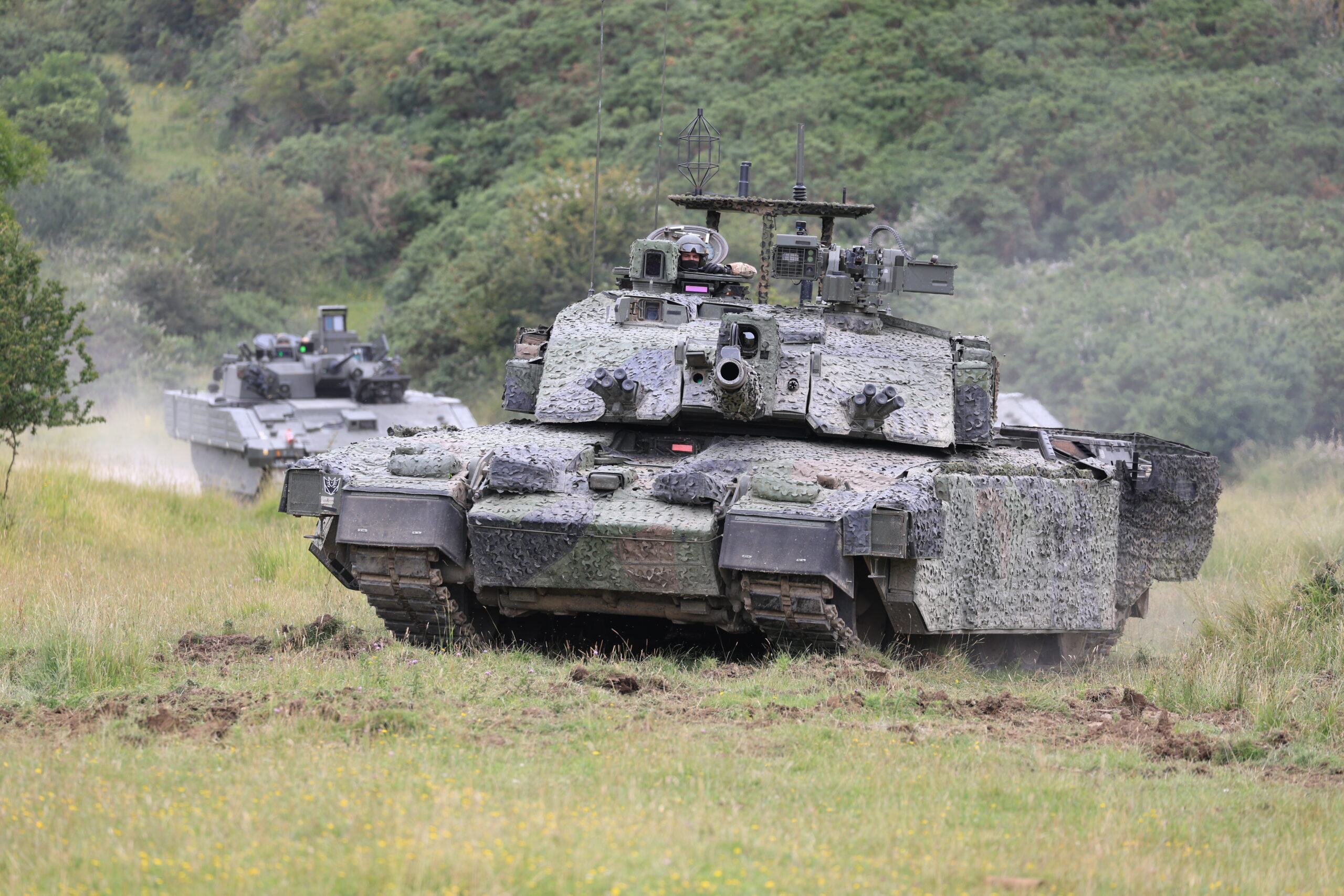
There is also provision for an active protection system (APS), of the kind that is becoming an increasingly important feature of modern tanks, in particular to better defend against anti-tank guided missiles and rocket-propelled grenades. It could also potentially be used in the future to counter lower-end drones.
Like the nMA package, the APS won’t be fitted to all Challenger 3s at all times, but will be installed when needed. The United Kingdom has selected the Israeli-made Trophy APS for the Challenger 3, a system that employs a radar to detect incoming projectiles before firing intercepting projectiles at them; you can read more about the system here. Trophy has also seen plenty of recent use in the Israeli war in Gaza. The prototype Challenger 3, in its current configuration, is not fitted with Trophy.

While firepower and protection are the main focuses of the Challenger 3 program, it also addresses mobility, thanks to the Heavy Armor Automotive Improvement Project (HAAIP). This includes retrofitting an improved engine (although with no increase in power output), a new suspension, a hydraulic track tensioner, an electric cold start system, and an improved cooling system.
The tank shown in the photos at the IQPC conference is the first of eight planned prototypes. These are expected to undergo 18 months of trials, both in the United Kingdom and in Germany, ahead of a systems qualification review in 2025.
The Challenger 3s won’t be new-builds, rather, they will upgraded from the existing Challenger 2s. This older variant of the Challenger design entered British Army service in 1994 and has since been involved in combat operations in the former Yugoslavia and Iraq, without loss to enemy action, according to the British Army.

RBSL’s Rory Breen explained how that work was done, in the creation of the first prototype Challenger 3:
“What we do for a prototype is take a bare chassis and trade about 50 percent of the LRUs [Line Replaceable Units] … and everything else, except the turret ring, is brand new,” Breaking Defense reported. Presumably, a similar approach will be taken for the production vehicles, too, although Breen said that it’s technically possible for RBSL to build new Challenger 3s if required.
The Challenger 3 is planned to achieve initial operating capability in 2027.
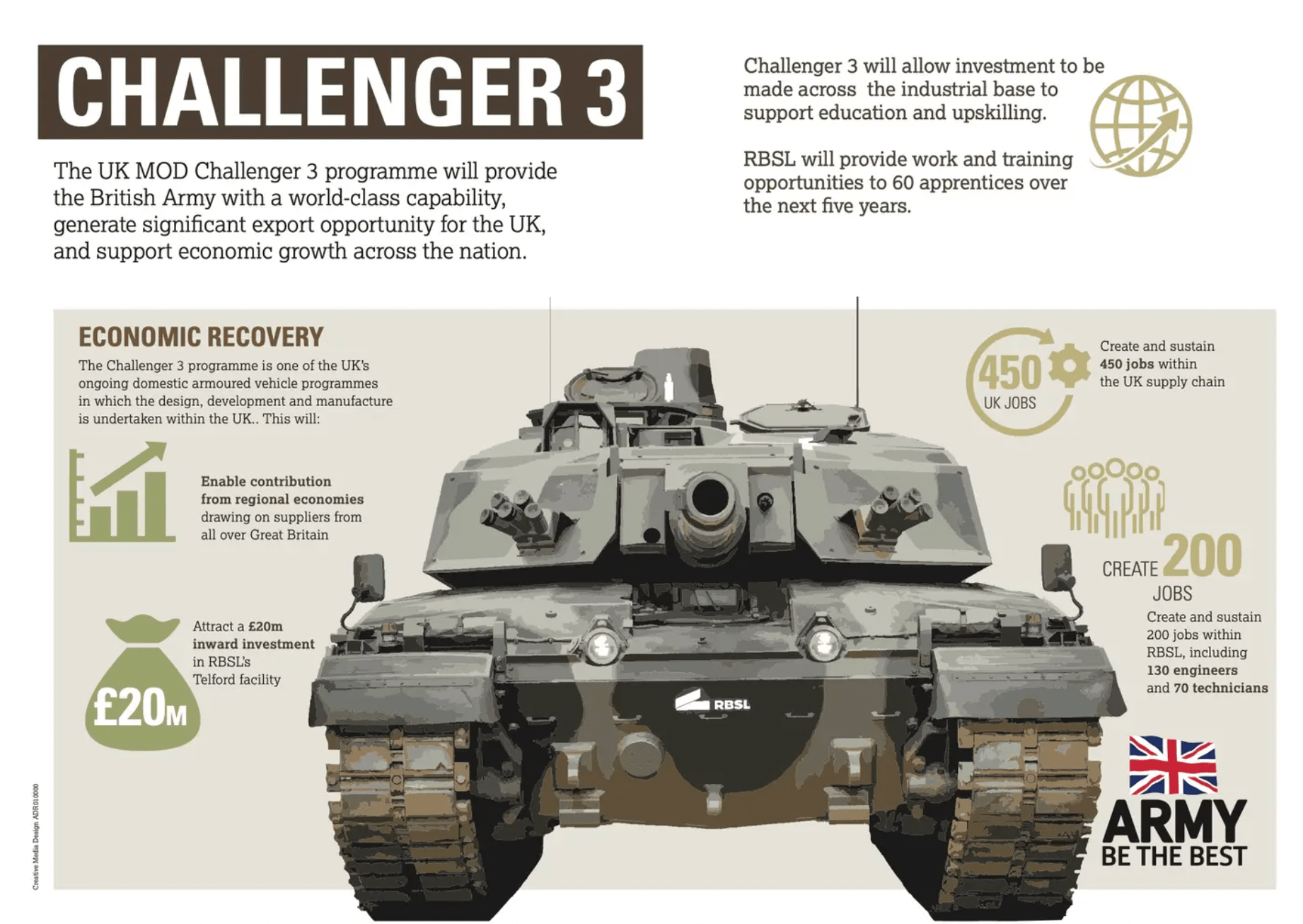
For the British Army, the U.K. government’s roughly $1 billion investment in the Challenger 3 program ensures the future of its tank force until at least 2040, when the Challenger 3 is expected to be phased out.
In the meantime, however, the current Challenger 2 fleet has faced questions about its relevance, especially after the transfer of 14 of these tanks to Ukraine last year, which you can read more about here.
In February 2023, reports emerged that the removal of 14 Challenger 2s from the British inventory of 227 reduced the fleet of operational vehicles by 25-30 percent. However, part of the shortfall was apparently due to some Challengers 2 already being taken from operational units for remanufacturing as Challenger 3s.
There have been other concerns over the serviceability and operational readiness of the Challenger 2 fleet, as well.
It’s against this backdrop that the British Army is working toward introducing not only the Challenger 3, but also wide-ranging structural changes, based around a “lethal, agile, and lean” force of around 72,500 personnel by 2025, down from 76,000 in 2021, and which will primarily be organized around deployable Brigade Combat Teams (BCTs).
As we have explored in the past, these BCTs will operate a range of new fighting vehicles and aircraft, with the Challenger 3s being supported by Ajax infantry fighting vehicles, Boxer wheeled armored personnel carriers, and AH-64E Apache attack helicopters, among others.

The British Army is eager to receive its Challenger 3s, which it describes as the “digitized backbone” that will connect it to other combat vehicles within the BCT, improving the ability to share data with different platforms in real time.
However, despite the British Army’s pivot back toward main battle tanks — and the renewed emphasis on armored warfare more generally, after the Russian invasion of Ukraine — there remain some questions about the mobility of the Challenger 3, especially given its additional weight without a corresponding increase in power.
Even before the Challenger 3 program, the Challenger 2 had issues regarding excessive weight. The Challenger 2 weighs 82.7 tons with add-on armor modules, compared to 73.6 tons for the U.S. Army’s M1A2 SEPv3.
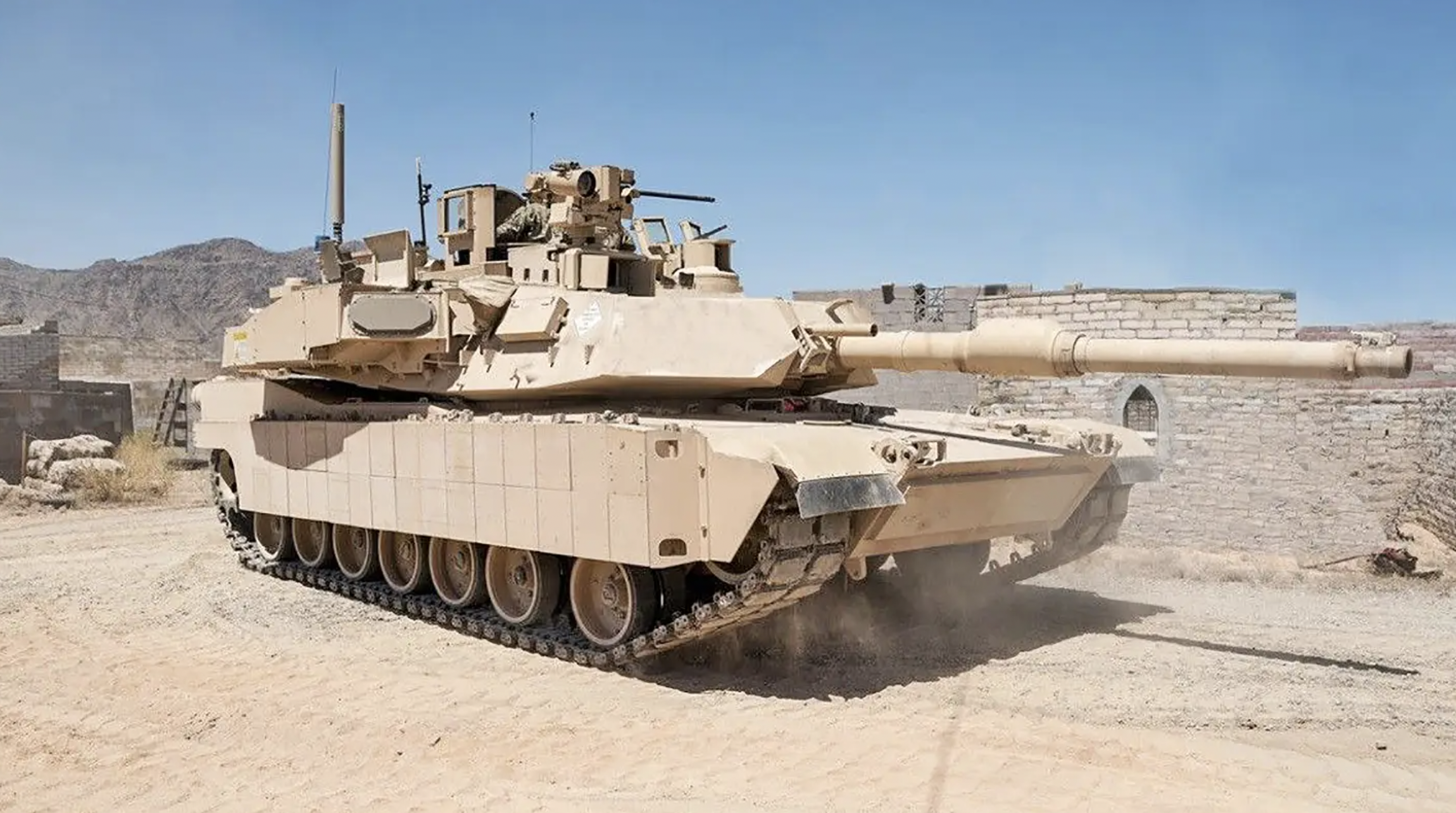
Designing the optimum tank is always a matter of balancing different requirements for firepower, protection, and mobility. While the Challenger 3 may not necessarily excel in the last of these, its firepower and protection attributes look impressive.
The Challenger 3 should have certain advantages when it comes to future upgrades, however, thanks to its open-architecture concept. The tank has the potential to be upgraded with additional or improved features, including responding to new threats on the battlefield. Such changes would require more expenditure, though, and this at a time when the U.K. government is investing heavily in airpower and future classes of warships, not to mention revamping its enormously costly submarine-based nuclear deterrent.
In the end, the biggest hurdle ahead may be ensuring that the British Army can get the most out of what will be a fairly small fleet of Challenger 3s. This will be felt especially keenly once a portion of the tanks move to Germany, where they will be based in a return to Cold War-era posture.
The war in Ukraine has demonstrated that predictions of the demise of the MBT were premature, to say the least. At the same time, it’s also shown how vulnerable even more modern tanks can be against a wide range of threats, from advanced precision-guided munitions to low-cost first-person-view (FPV) drones.
A video showing the first evidence of a Ukrainian Challenger 2 destroyed in the conflict:
With the security environment not only in Europe but also further afield changing rapidly, it remains to be seen exactly how the British Army will use its bespoke force of Challenger 3 main battle tanks once they enter service.
Contact the author: thomas@thedrive.com
